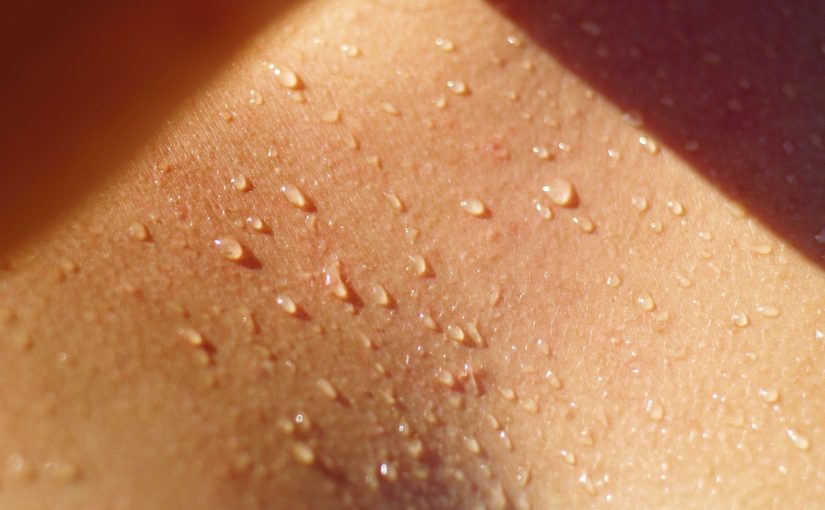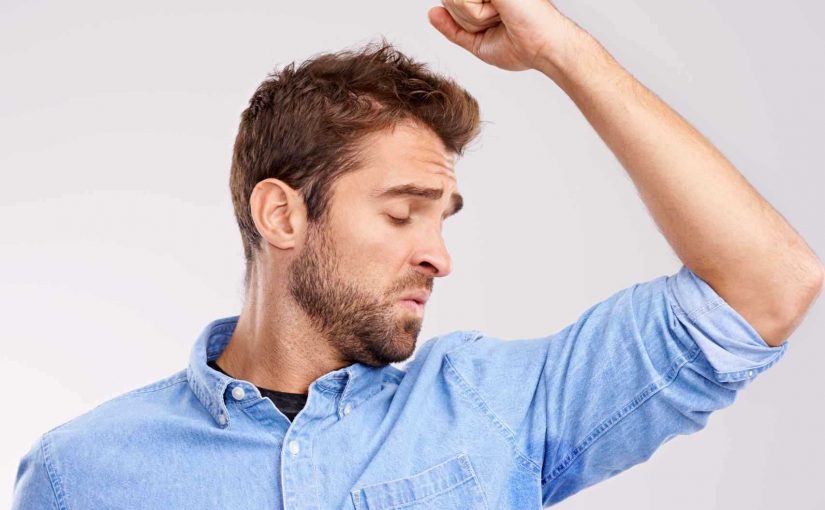
Hyperhidrosis is a medical condition in which the body’s sweat glands “overreact,” causing excessive sweating. It is also known as Sudorrhea or Polyhidrosis. Hyperhidrosis treatment in Los Angeles can vary from lifestyle changes and over-the-counter medications to prescription drugs and dermatological treatments like botox for sweating.
Hyperhidrosis is not a life-threatening condition but can lead to psychological trauma and embarrassment. The condition tends to begin during adolescence. The most commonly affected areas include the underarms, face, hands, feet, and groin due to the high concentration of sweat glands in these areas. There are two types of Hyperhidrosis:
- Focal Hyperhidrosis – Also known as Primary Hyperhidrosis, it is a chronic skin condition that you may inherit from your family. It is caused by a gene mutation. It usually affects only the armpits, hands, feet, and head. Most people with Focal Hyperhidrosis will see symptoms early in life. Underarm Hyperhidrosis or Axillary Hyperhidrosis is a type of Focal or Primary Hyperhidrosis.
- Generalized Hyperhidrosis – Also known as Secondary Hyperhidrosis, it causes excessive sweating due to an underlying medical problem. Sometimes, medications like zinc supplements and naproxen can also cause excessive sweating.
Causes of Primary Hyperhidrosis
Primary Hyperhidrosis was linked to a patient’s mental and emotional state. The condition was considered psychological, affecting only anxious, nervous, or stressed people. But recent research has shown that individuals with Primary Hyperhidrosis experience stress and anxiety because of the condition and not the other way round.
Recent studies indicate that Focal Hyperhidrosis may be inherited. Most patients with Primary or Focal Hyperhidrosis have either a parent or sibling with the same condition.
Sweat is how the body keeps itself cool when it gets too hot. The nerves trigger your sweat glands, and it starts to produce sweat. In Hyperhidrosis, some of these sweat glands overwork for long periods for no specific reason producing more sweat than the body needs.
Focal Hyperhidrosis is commonly caused due to:
- Specific odors and foods like coffee, peanut butter, chocolate, citric acid, and spices.
- Emotional trauma and anxiety
- Heat
- Spinal Cord Injury
Symptoms
The symptoms of underarm Hyperhidrosis can range in their severity. While they may be minor for some people, others may have to deal with excessive sweating every day. The sweat caused due to this condition can soak your clothes to the point that you need to change into new clothes frequently.
The excessive underarm sweating caused by the condition can also lead to:
- Inflammation and itching.
- Body odor due to bacteria on the skin mixing with sweat particles.
- Residue on the skin and clothes from the combination of sweat, chemicals, and bacteria.
- Changes in the skin like wrinkles, cracks, discoloration, and paleness.
- Painful and irritating skin problems like bacterial or fungal infections.
- Constantly worrying about clothes getting stained with sweat.
- Reluctance to make any physical contact.
- Being self-conscious.
- Being socially withdrawn.
Your symptoms and experiences with the condition can offer clues as to the type of Hyperhidrosis you may have.
How is Hyperhidrosis diagnosed?
If you feel you are suffering from Hyperhidrosis, you can speak to your healthcare provider. Your healthcare provider will review your health history and go through your symptoms in detail. They may ask you about the frequency and timing of your symptoms. In some cases, you may be asked to take up a couple of tests to identify the exact cause. Blood or urine tests can help confirm or rule out underlying medical conditions that may cause excessive sweating. You may also be asked to take tests to measure how much sweat your body produces. They include:
- Starch-Iodine test: The health care provider will apply an iodine solution to the underarm and other parts of the body and sprinkle starch over the solution. The solution will turn dark blue in areas where you have excessive sweating.
- Paper test: Your healthcare provider will place a special paper on the affected area of the body to absorb the excessive sweat. The provider will then weigh the paper to determine how much you have sweated.
Botox for Underarm Hyperhidrosis
Underarm Hyperhidrosis is one of the most common types of Hyperhidrosis faced by people. The FDA has approved Botox to treat severe underarm Hyperhidrosis or sweating. It can be used if the sweating cannot be controlled with topical treatments like antiperspirants.
Botox is a protein that is produced by the bacterium Clostridium botulinum. Doctors use small doses of botox to stop the release of the chemical messenger acetylcholine to treat underarm Hyperhidrosis. It temporarily blocks the nerves in the underarm that stimulate sweating.
How Does Botox Work for Underarm Hyperhidrosis?
Botox is known to dry up the sweat. Two controlled clinical trials involving more than 600 adults showed that people who received Botox had significantly less underarm sweating compared to the group that received the placebo. In one study, 91% of the people in the Botox group showed an almost 50% reduction in underarm sweat compared to 36% of people in the Placebo group. The second study’s average response time after the first treatment was 170 days.
Side Effects of Botox Treatments for Underarm Hyperhidrosis
Most people may not experience any side effects of botox treatments for underarm Hyperhidrosis. About 3% to 10% of the people may experience some side effects like pain in the injection site, bleeding, sweating in other parts of the body, headache, flu-like symptoms, itching, fever, and anxiety.
What to Do After Treatment?
You can go home immediately after the Botox treatment. You should avoid exercise, hot baths, and showers for the rest of the day. You may be asked to come for a follow-up appointment after 1-2 weeks of the procedure to check for side effects and to cover any missed areas.
https://www.mybotoxla.com/hyperhidrosis-excessive-sweating can help treat Underarm Hyperhidrosis. We offer botox to control excessive sweating in the underarms. The botox injection will temporarily block messages between your nerves and the sweat glands, preventing them from producing sweat. You can see results in just one session of these injections.
My Botox LA Med Spa,
12457 Ventura Blvd #205 Studio City CA 91604,
818-850-3345
Find us on Social Media
https://www.facebook.com/mybotoxla
https://www.youtube.com/channel/UCUEKfIDVB3O91CXrkYaklYg
https://www.instagram.com/mybotoxla_medspa







